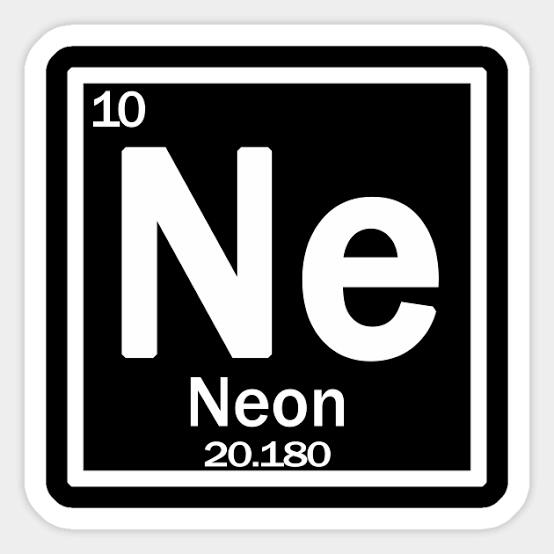What is
Neon
chemical element, inert gas of Group 18 (noble gases) of the periodic table, used in electric signs and fluorescent lamps. Colourless, odourless, tasteless, and lighter than air, neon gas occurs in minute quantities in Earth's atmosphere and trapped within the rocks of Earth's crust.

More information
neon (Ne), chemical element, inert gas of Group 18 (noble gases) of the periodic table, used in electric signs and fluorescent lamps. Colourless, odourless, tasteless, and lighter than air, neon gas occurs in minute quantities in Earth’s atmosphere and trapped within the rocks of Earth’s crust. Though neon is about 31/2 times as plentiful as helium in the atmosphere, dry air contains only 0.0018 percent neon by volume. This element is more abundant in the cosmos than on Earth. Neon liquefies at −246.048 °C (−411 °F) and freezes at a temperature only 21/2° lower. When under low pressure, it emits a bright orange-red light if an electrical current is passed through it. This property is utilized in neon signs (which first became familiar in the 1920s), in some fluorescent and gaseous conduction lamps, and in high-voltage testers. The name neon is derived from the Greek word neos, “new.”
Neon was discovered (1898) by the British chemists Sir William Ramsay and Morris W. Travers as a component of the most volatile fraction of liquefied crude argon obtained from air. It was immediately recognized as a new element by its unique glow when electrically stimulated. Its only commercial source is the atmosphere, in which it is 18 parts per million by volume. Because its boiling point is −246 °C (−411 °F), neon remains, along with helium and hydrogen, in the small fraction of air that resists liquefaction upon cooling to −195.8 °C (−320.4 °F, the boiling point of liquid nitrogen). Neon is isolated from this cold, gaseous mixture by bringing it into contact with activated charcoal, which adsorbs the neon and hydrogen; removal of hydrogen is effected by adding enough oxygen to convert it all to water, which, along with any surplus oxygen, condenses upon cooling. Processing 88,000 pounds of liquid air will produce one pound of neon.
Medical uses

Neon may be used in the clinical setting as a diagnostic tracer gas in a gas analyzer for a lung diffusion test. Other clinical applications of neon, such as a radiotherapy in various cancers 1, have been studied
One of the most efficient ways to study the effect of
different pathologies on human lung function is to
generate models of mouse lung function using thediffusion capacity of the lung for carbon monoxide. Diffusion models
established by conducting experiments using carbon
monoxide and neon exhaled from the mouse lung are
applicable to human lungs. These models provide
valuable insight into disease such as chronic idiopathic
fibrosis and emphysema, and allow for the evaluation
of potential interventions and treatments.
During an experiment, carbon monoxide and neon are
introduced to the mouse lung at the same time using a
small volume syringe. Carbon monoxide diffuses in the
lung at different rates for each pathology as well as overthe duration of the disease. Neon is used as a tracer
gas, since it does not diffuse in the lung. The exhaledgas from the mouse lung is then diluted to 2 mL with
room air and analyzed for composition. The
concentrations of carbon monoxide and neon are used
by the researcher to calculate the DLCO, which is used
to produce a stable model of the disease
Credits to:
https://www.inficon.com/files/downloads/dicf220a1%20Micro%20GC%20Fusion%20Application%20Note%20-%20Rapid%20Analysis%20of%20Neon%20and%20CO.pdf